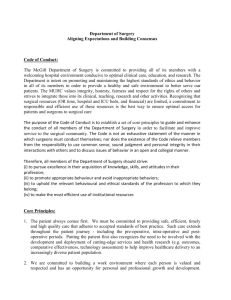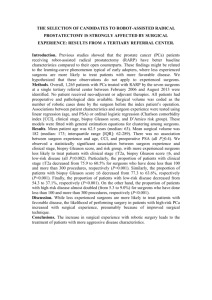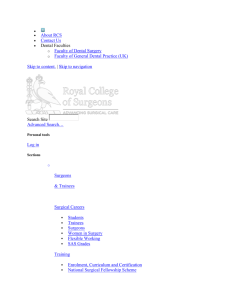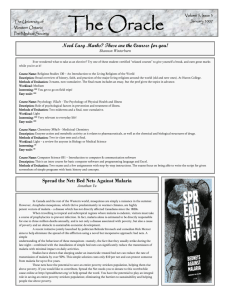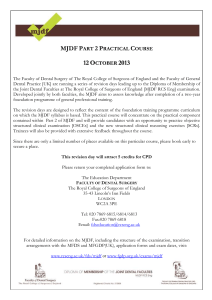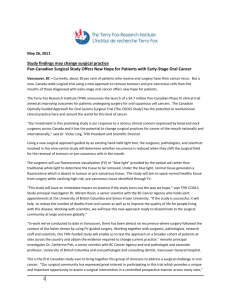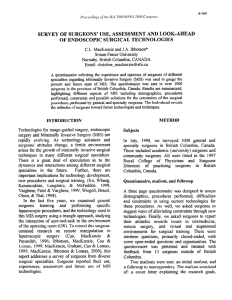02/12/2014 RCSENG visit
advertisement
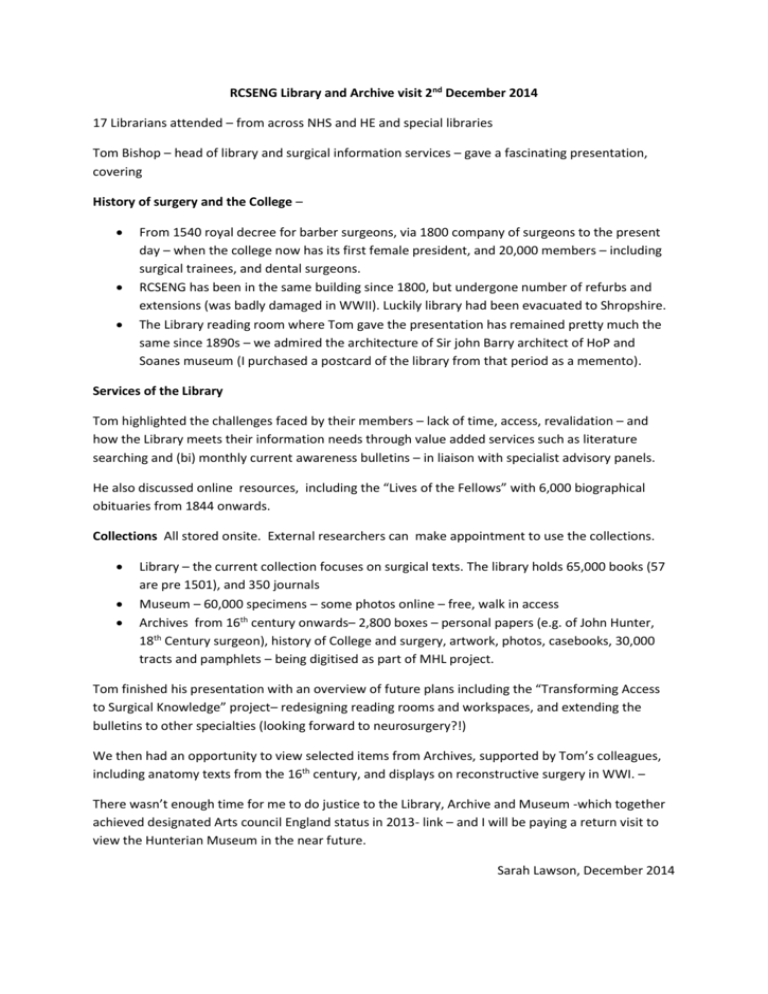
RCSENG Library and Archive visit 2nd December 2014 17 Librarians attended – from across NHS and HE and special libraries Tom Bishop – head of library and surgical information services – gave a fascinating presentation, covering History of surgery and the College – From 1540 royal decree for barber surgeons, via 1800 company of surgeons to the present day – when the college now has its first female president, and 20,000 members – including surgical trainees, and dental surgeons. RCSENG has been in the same building since 1800, but undergone number of refurbs and extensions (was badly damaged in WWII). Luckily library had been evacuated to Shropshire. The Library reading room where Tom gave the presentation has remained pretty much the same since 1890s – we admired the architecture of Sir john Barry architect of HoP and Soanes museum (I purchased a postcard of the library from that period as a memento). Services of the Library Tom highlighted the challenges faced by their members – lack of time, access, revalidation – and how the Library meets their information needs through value added services such as literature searching and (bi) monthly current awareness bulletins – in liaison with specialist advisory panels. He also discussed online resources, including the “Lives of the Fellows” with 6,000 biographical obituaries from 1844 onwards. Collections All stored onsite. External researchers can make appointment to use the collections. Library – the current collection focuses on surgical texts. The library holds 65,000 books (57 are pre 1501), and 350 journals Museum – 60,000 specimens – some photos online – free, walk in access Archives from 16th century onwards– 2,800 boxes – personal papers (e.g. of John Hunter, 18th Century surgeon), history of College and surgery, artwork, photos, casebooks, 30,000 tracts and pamphlets – being digitised as part of MHL project. Tom finished his presentation with an overview of future plans including the “Transforming Access to Surgical Knowledge” project– redesigning reading rooms and workspaces, and extending the bulletins to other specialties (looking forward to neurosurgery?!) We then had an opportunity to view selected items from Archives, supported by Tom’s colleagues, including anatomy texts from the 16th century, and displays on reconstructive surgery in WWI. – There wasn’t enough time for me to do justice to the Library, Archive and Museum -which together achieved designated Arts council England status in 2013- link – and I will be paying a return visit to view the Hunterian Museum in the near future. Sarah Lawson, December 2014



